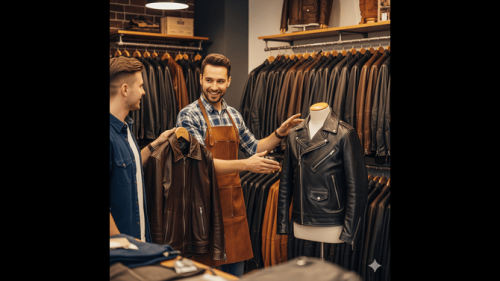Material innovation has quietly become the foundation of how we live, sleep, and even move. Among all the smart materials that have reshaped design and comfort, viscoelastic polyurethane foam stands apart. It’s not just another cushioning material — it’s a breakthrough in balancing softness with resilience, science with comfort.
This foam type, often known for its ability to contour, adapt, and recover, has found its place in everything from bedding and furniture to automotive interiors and industrial applications. But what makes it truly special isn’t just its comfort — it’s the way it endures pressure, adjusts to temperature, and retains shape over years of use.
Understanding What Makes It Different
Every foam serves a purpose. Some offer lightness, some insulation, and some comfort. But viscoelastic materials introduced something entirely new — a behavior that responds to both pressure and heat.
When pressure is applied, viscoelastic polyurethane foam compresses slowly, then gradually returns to its original form once the load is removed. That “slow recovery” characteristic, a blend of viscosity and elasticity, is what makes it distinct from conventional foams.
It reacts almost intelligently — softening under body heat, then firming back up as it cools. This dynamic response creates a personalized experience, which is why it became a staple in comfort-related industries like mattresses and ergonomic furniture.
The Science Behind Its Flexibility
At its core, this foam is a result of polymer chemistry — a careful mix of polyurethane with specific chemical additives that enhance elasticity and responsiveness. Unlike rigid foams that maintain a fixed structure, this one adapts fluidly.
The key lies in its open-cell structure. Each cell compresses and deforms independently, allowing even weight distribution. The result is superior comfort and flexibility. This unique structure also ensures minimal stress points, which is why it’s favored for products that come in direct contact with the human body.
Beyond comfort, this flexibility means durability. The foam can handle thousands of compression cycles without significant wear. That’s why it’s trusted in industries where endurance is non-negotiable.
The Role of Visco Elastic Memory Foam in Everyday Design
When people talk about body-contouring comfort, they’re often referring to visco elastic memory foam. It’s essentially an evolution of the same technology, refined to respond precisely to human pressure patterns.
This material has transformed how we define support. Instead of resisting weight, it embraces it — molding around every curve and evenly distributing pressure. That’s what prevents pain points in mattresses or cushions, and what creates that feeling of “floating” comfort.
What’s often overlooked, though, is how this same adaptability works outside the home. Automotive designers use visco elastic memory foam to enhance seat comfort and fatigue resistance during long drives. Even in medical settings, the material supports patients who spend extended time in one position, minimizing bedsores and discomfort.
It’s this adaptability — the ability to serve multiple industries with equal efficiency — that underscores just how far foam innovation has come.
Durability That Outlasts Expectations
Durability isn’t just about longevity; it’s about how well a material maintains its integrity under real-world conditions. Traditional foams tend to sag, crumble, or lose firmness over time. But viscoelastic variants resist deformation through their molecular design.
Their cell structure bounces back, almost “remembering” its original state. Over years of use, that ability doesn’t fade much. Whether in furniture, transport seating, or specialized applications, the foam continues to perform — flexible yet stable.
It also resists common problems like tearing and moisture absorption, both of which are common weaknesses in older foam types. The reason? A controlled balance between density and elasticity that protects its internal structure.
When engineers talk about “long-term mechanical stability,” this is exactly what they mean — a material that retains its core properties even after continuous use.
Comfort Meets Engineering Precision
One of the most fascinating aspects of viscoelastic foam is how it bridges comfort and technical engineering. On the surface, it’s soft, even luxurious. But within, there’s a science of molecular motion and controlled deformation at play.
Every inch of foam can be customized during manufacturing — density, rebound speed, firmness — depending on where it will be used. A high-density version for mattresses will feel entirely different from one designed for medical equipment.
This level of precision is what gives manufacturers the freedom to innovate, designing products that balance comfort with performance.
Sustainability and Evolving Technology
With sustainability becoming a key focus, modern foam production has shifted toward eco-conscious processes. Manufacturers are investing in cleaner chemistry, reducing emissions, and recycling production waste.
New-age foams now incorporate low-emission formulations that maintain the same strength and flexibility while minimizing environmental impact. As energy efficiency becomes a design priority across industries, lightweight and thermally stable foams are playing a vital role.
In many ways, the evolution of foam isn’t just about material — it’s about responsibility.
The Versatility That Shapes the Future
Whether it’s aerospace, furniture, or medical devices, the demand for materials that can perform under pressure while maintaining comfort is universal. Viscoelastic foams deliver exactly that. They can adapt, protect, and endure.
And as technology pushes toward smart materials and adaptive systems, this foam stands ready to evolve again — incorporating temperature control, advanced elasticity, and even embedded sensors in future designs.
It’s more than just a cushioning material. It’s a platform for innovation.
Conclusion
True innovation often hides in plain sight — inside our furniture, beneath our seats, behind our walls. That’s the quiet brilliance of viscoelastic polyurethane foam. It offers not just softness but structure, not just comfort but endurance.
As industries demand materials that can bend without breaking, compress without collapsing, and comfort without compromise, this foam continues to deliver. Its unique chemistry, paired with evolving technologies like reticulated polyurethane foam, promises even more versatility ahead.
Through this balance of strength and flexibility, brands like Sheela Foam continue to redefine what’s possible — crafting materials that make life softer, safer, and stronger, one layer at a time.










